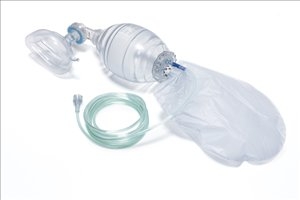How to Resuscitate a Baby or Young Child
[fusion_dropcap class="fusion-content-tb-dropcap"]I[/fusion_dropcap]t’s never something any parent or carer wants to happen but if a child is not breathing or moving, it is imperative that you know first aid.
Here at Openhouse we highly recommend parents take a first aid course to fully understand how to perform resuscitation properly. See the Red Cross’ site for details on […]
It’s never something any parent or carer wants to happen but if a child is not breathing or moving, it is imperative that you know first aid.
Here at Openhouse we highly recommend parents take a first aid course to fully understand how to perform resuscitation properly. See the Red Cross’ site for details on first aid courses. If your family is ever in any life-threatening emergency, remember to call 999.

The Giant Vermin / CC by
The following are instructions of how to resuscitate a young child and a child under 12 months old.
1. Begin by ensuring the area is safe
Look for hazards, this could be electrical equipment or even traffic.
2. Check the child’s responsiveness
Gently touch the child and clearly ask, “Are you alright?”
If you suspect they have a neck injury do not shake them.
2A. If the child moves or responds to you
Do not move them, unless they are in a hazardous or dangerous area.
Assess their condition and call for help if needed.
Thereafter assess their condition regularly.
2B. If the child is not responding
Shout for assistance and get them to call 999.
Child is under 12 months old:
Gently place the head in a neutral position and keep the head and neck in line and not tilted.
In the motion, place your fingertips under the point of their chin and lift.
Never push the the soft tissue below the chin as this could cause the airway to block.
If the child is over 12 months old:
Place your hand on their forehead, tilting back their head back and leaving them in the same position you found them.
While doing this, use your fingertips to lift their chin, opening the child’s airway. Do not push the soft tissue below the chin as this may cause a blockage in the airway.
If you suspect a neck injury, tilt their head a very small amount at a time, until the airway is opened.
If you do not suspect a neck injury, the process will be made easier by carefully turning them on their back.
3. While maintaining an open airway, try to find signs of breathing.
Place your face near to theirs, looking down their chest.
Listen for breathing sounds from the child’s nose and mouth.
Look for chest movements.
Feel for air on your cheek.
Only decide they are not breathing after 10 seconds
3A. If breathing is normal
Turn them to their side.
Assess their breathing regularly.
3B. If the child is not breathing or is breathing infrequently and irregularly
Remove any obstruction in the mouth and give 5 rescue breaths (See 4A and 4B.)
Be aware of any responses to the breaths, such as a gag or a cough.
4A. Rescue breaths for a child under 12 months old
With their head tilted back and chin lifted, breathe in, then cover the child’s mouth and nose with your mouth, sealing the airways. If you are unable to seal both, just seal the mouth. You can breathe into the nose, but you must cover their mouth to stop air escaping.
Blow for 1 to 1.5 seconds, watching for the chest to visibly rise.
The head must remain tilted and the chin needs to stay tilted. Remove your mouth, and watch the chest falling as air releases.
Repeat this process 5 times, whilst looking for responses such as a gag or a cough.
4B. Rescue breaths for a child over 12 months.
With their head tilted back and chin lifted, use your thumb and forefinger to close the soft part of the child’s nose.
Open their mouth slightly and inhale, then place your mouth on their mouth, sealing the airway.
Blow for 1 to 1.5 seconds, watching for the chest to visibly rise.
The head must remain tilted and the chin needs to stay tilted. Remove your mouth, and watch the chest falling as air releases.
Repeat this process 5 times, whilst looking for responses such as a gag or a cough.
5. If the child still isn’t breathing, check to see if their airway is being obstructed
Open the mouth and remove all visible obstructions. Do not blindly poke fingers or objects into their mouth.
Check that the head is tilted and the chin is lifted properly, but do not over extend their neck.
Do 5 more rescue breaths, if still unsuccessful, move onto chest compressions and rescue breaths
6. Chest compressions
See 6A for the differences in compression between under 12 months old and over 12 months old.
Avoid performing compressions on the stomach, to do this, find where the lowest ribs join in the middle, and then go 1 finger’s width above that to compress the breastbone.
Push down 1/3 of the chest’s depth and then release.
Perform the compressions at the beat of 100 compressions a minute, although 100 compressions a minute is the rate they should be delivered, 100 compressions will not be achieved as rescue breaths will need to be administered also.
If you are alone, continue resuscitation for 1 minute before calling 999.
6A. Chest compression for under 12 months old
Use only 2 finger tips to apply the compression.
6B.Chest compression for over 12 months old
Using the heel of just 1 hand and keeping your fingers lifted so as not to put pressure on their ribs, position yourself vertically above the child’s chest with a straight arm when compressing.
If the child is larger or you are small, it might be easier to use both hands with interlocked fingers, so as to avoid damaging their ribs.
7. Continue resuscitation until
The child shows signs of life (normal breathing, coughing, movement of arms or legs).
Medical assistance arrives.
You become too exhausted.
Openhouse are a medical supplier who stock a range of child resuscitation equipment, take a look at our Child BVMs today.



